Tiles are a versatile and practical choice for kitchen walls and floors, offering durability, ease of maintenance, and a wide range of design options. When it comes to selecting the right floor and wall tiles for your kitchen, there are several factors to consider, from material and style to size and color. In this comprehensive guide, we will explore the benefits of using tiles in the kitchen and provide tips on how to choose the perfect tiles for your space. One of the primary advantages of using tiles in the kitchen is their durability. Kitchen floors and walls are exposed to a high level of wear and tear, from spills and stains to heavy foot traffic. Tiles are known for their toughness and resilience, making them an excellent choice for these high-traffic areas. Whether you opt for ceramic, porcelain, or natural stone tiles, you can rest assured that your kitchen surfaces will withstand the test of time. In addition to their durability, tiles are also easy to clean and maintain, making them a hygienic option for kitchens. Unlike other materials that can harbor bacteria and mold, tiles are non-porous and resistant to moisture, making them easy to wipe down and keep germ-free. A quick sweep or mop is all it takes to keep your kitchen floors and walls looking fresh and clean, making tiles an ideal choice for busy households. Tiles are available in a wide variety of styles, patterns, and colors, allowing you to customize your kitchen to suit your personal taste and decor. From sleek, modern designs to rustic, farmhouse-inspired looks, there is a tile option to complement any kitchen aesthetic. You can choose from large format tiles for a seamless, contemporary feel or opt for mosaic tiles to add a pop of color and texture to your space. With so many options to choose from, you can create a kitchen that is uniquely yours. When selecting tiles for your kitchen, it’s important to consider the size of the space and the overall design scheme. Larger tiles are ideal for open-concept kitchens, as they can create a sense of continuity and flow between the various areas. On the other hand, smaller tiles are perfect for creating intricate patterns and adding visual interest to smaller spaces. Consider the layout of your kitchen and the look you want to achieve when choosing the size and shape of your tiles. Another factor to consider when selecting kitchen tiles is the material. Ceramic tiles are a popular choice for kitchen floors and walls due to their affordability, durability, and versatility. Available in a wide range of colors and finishes, ceramic tiles can mimic the look of natural stone or wood without the hefty price tag. Porcelain tiles are another durable option for kitchen surfaces, known for their strength and resistance to heat and moisture. Natural stone tiles, such as marble, granite, and travertine, offer a luxurious and timeless look, perfect for creating a high-end kitchen aesthetic. In addition to material and size, color is an important consideration when choosing kitchen tiles. Light-colored tiles can make a small kitchen feel more spacious and airy, while dark-colored tiles can create a cozy and intimate atmosphere.
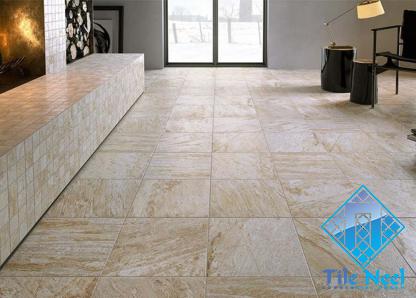
.
 Neutral tones like white, beige, and gray are versatile choices that can complement a variety of design styles, while bold hues like blue, green, or black can add a dramatic flair to your kitchen. Consider the overall color scheme of your kitchen and choose tiles that enhance the look you want to achieve. In terms of installation, there are different options available for kitchen tiles. Floor tiles can be installed using various methods, including traditional mortar, adhesive, or self-adhesive backing. Wall tiles, on the other hand, are typically mounted using tile adhesive or grout. It’s important to hire a professional installer to ensure that your tiles are laid properly and securely, minimizing the risk of cracking or shifting over time. Maintaining your kitchen tiles is relatively easy and straightforward. Regular cleaning with a mild detergent and warm water is usually sufficient to keep your tiles looking their best. Avoid using harsh chemicals or abrasive cleaners, as these can damage the tiles and grout. For tough stains or grime, you can use a commercial tile cleaner or a homemade solution of vinegar and water. It’s also a good idea to seal your tiles periodically to protect them from stains and moisture, especially in high-use areas like the kitchen. In conclusion, floor and wall tiles are an excellent choice for kitchens due to their durability, ease of maintenance, and design versatility. Whether you prefer a sleek, modern look or a rustic, farmhouse feel, there is a tile option to suit your style. Consider factors like material, size, color, and installation method when selecting tiles for your kitchen, and remember to hire a professional installer for a flawless finish. With the right tiles, your kitchen can be both functional and stylish, creating a space that you’ll love to cook and entertain in for years to come. From large, open-concept kitchens to cozy galley layouts, floor and wall tiles can enhance the beauty and functionality of any kitchen space. Let’s delve deeper into the specific considerations you should keep in mind when choosing tiles for your kitchen, ensuring that you make an informed decision that aligns with your practical needs and personal style preferences. When selecting floor tiles for your kitchen, it is essential to prioritize functionality and safety. The kitchen is a high-traffic area prone to spills, splashes, and messes, so slip-resistant tiles are a must-have to prevent accidents and ensure a safe kitchen environment. Look for tiles with a textured surface or a matte finish that provides traction underfoot, especially in areas near the sink and stove where water and grease are common culprits. In addition to slip resistance, durability is another crucial factor to consider when selecting floor tiles for the kitchen.
Neutral tones like white, beige, and gray are versatile choices that can complement a variety of design styles, while bold hues like blue, green, or black can add a dramatic flair to your kitchen. Consider the overall color scheme of your kitchen and choose tiles that enhance the look you want to achieve. In terms of installation, there are different options available for kitchen tiles. Floor tiles can be installed using various methods, including traditional mortar, adhesive, or self-adhesive backing. Wall tiles, on the other hand, are typically mounted using tile adhesive or grout. It’s important to hire a professional installer to ensure that your tiles are laid properly and securely, minimizing the risk of cracking or shifting over time. Maintaining your kitchen tiles is relatively easy and straightforward. Regular cleaning with a mild detergent and warm water is usually sufficient to keep your tiles looking their best. Avoid using harsh chemicals or abrasive cleaners, as these can damage the tiles and grout. For tough stains or grime, you can use a commercial tile cleaner or a homemade solution of vinegar and water. It’s also a good idea to seal your tiles periodically to protect them from stains and moisture, especially in high-use areas like the kitchen. In conclusion, floor and wall tiles are an excellent choice for kitchens due to their durability, ease of maintenance, and design versatility. Whether you prefer a sleek, modern look or a rustic, farmhouse feel, there is a tile option to suit your style. Consider factors like material, size, color, and installation method when selecting tiles for your kitchen, and remember to hire a professional installer for a flawless finish. With the right tiles, your kitchen can be both functional and stylish, creating a space that you’ll love to cook and entertain in for years to come. From large, open-concept kitchens to cozy galley layouts, floor and wall tiles can enhance the beauty and functionality of any kitchen space. Let’s delve deeper into the specific considerations you should keep in mind when choosing tiles for your kitchen, ensuring that you make an informed decision that aligns with your practical needs and personal style preferences. When selecting floor tiles for your kitchen, it is essential to prioritize functionality and safety. The kitchen is a high-traffic area prone to spills, splashes, and messes, so slip-resistant tiles are a must-have to prevent accidents and ensure a safe kitchen environment. Look for tiles with a textured surface or a matte finish that provides traction underfoot, especially in areas near the sink and stove where water and grease are common culprits. In addition to slip resistance, durability is another crucial factor to consider when selecting floor tiles for the kitchen.
..
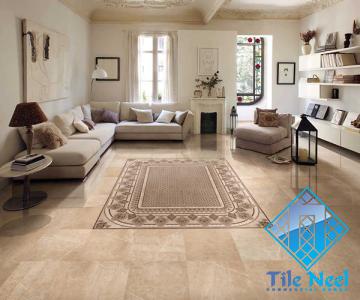 Porcelain tiles are an excellent choice for high-traffic areas due to their dense composition and resistance to scratches and stains. These tiles are also highly resilient to moisture and temperature changes, making them ideal for kitchen floors that are exposed to spills and frequent cleaning. Opting for high-quality porcelain tiles ensures that your kitchen floor remains attractive and functional for years to come. For those seeking a more luxurious and natural aesthetic, natural stone tiles like marble or travertine can add a touch of elegance to your kitchen floor. These tiles come in a variety of colors and patterns, each unique due to the natural veining and mineral composition of the stone. While natural stone tiles require more maintenance than porcelain tiles, regular sealing and upkeep can preserve their beauty and longevity, transforming your kitchen into a sophisticated culinary haven. In terms of design, the layout and size of your kitchen can influence the choice of floor tiles. Large-format tiles are well-suited to open-plan kitchens, creating the illusion of a seamless expanse and reducing grout lines for a clean, modern look. Conversely, smaller tiles or mosaic patterns can add visual interest and character to compact kitchens, breaking up the space and introducing texture and personality. Consider the dimensions and architectural features of your kitchen when selecting floor tiles to maximize the visual impact and functionality of your flooring. Moving to the realm of kitchen wall tiles, these elements play a vital role in protecting your walls from splashes, stains, and moisture while enhancing the visual appeal of your culinary haven. When choosing wall tiles, it’s essential to strike a balance between aesthetics and practicality, selecting materials that are easy to clean and maintain while complementing your overall kitchen design scheme. Ceramic tiles are a popular choice for kitchen walls due to their versatility, affordability, and range of colors and patterns. These tiles are resistant to stains and heat, making them ideal for areas near the stove or sink where spills are likely to occur. Whether you opt for glossy subway tiles for a classic look or textured patterned tiles for a contemporary feel, ceramic tiles can elevate your kitchen walls with style and durability. Glass tiles are another chic option for kitchen wall applications, adding a touch of luminosity and reflective depth to your space.
Porcelain tiles are an excellent choice for high-traffic areas due to their dense composition and resistance to scratches and stains. These tiles are also highly resilient to moisture and temperature changes, making them ideal for kitchen floors that are exposed to spills and frequent cleaning. Opting for high-quality porcelain tiles ensures that your kitchen floor remains attractive and functional for years to come. For those seeking a more luxurious and natural aesthetic, natural stone tiles like marble or travertine can add a touch of elegance to your kitchen floor. These tiles come in a variety of colors and patterns, each unique due to the natural veining and mineral composition of the stone. While natural stone tiles require more maintenance than porcelain tiles, regular sealing and upkeep can preserve their beauty and longevity, transforming your kitchen into a sophisticated culinary haven. In terms of design, the layout and size of your kitchen can influence the choice of floor tiles. Large-format tiles are well-suited to open-plan kitchens, creating the illusion of a seamless expanse and reducing grout lines for a clean, modern look. Conversely, smaller tiles or mosaic patterns can add visual interest and character to compact kitchens, breaking up the space and introducing texture and personality. Consider the dimensions and architectural features of your kitchen when selecting floor tiles to maximize the visual impact and functionality of your flooring. Moving to the realm of kitchen wall tiles, these elements play a vital role in protecting your walls from splashes, stains, and moisture while enhancing the visual appeal of your culinary haven. When choosing wall tiles, it’s essential to strike a balance between aesthetics and practicality, selecting materials that are easy to clean and maintain while complementing your overall kitchen design scheme. Ceramic tiles are a popular choice for kitchen walls due to their versatility, affordability, and range of colors and patterns. These tiles are resistant to stains and heat, making them ideal for areas near the stove or sink where spills are likely to occur. Whether you opt for glossy subway tiles for a classic look or textured patterned tiles for a contemporary feel, ceramic tiles can elevate your kitchen walls with style and durability. Glass tiles are another chic option for kitchen wall applications, adding a touch of luminosity and reflective depth to your space.
…
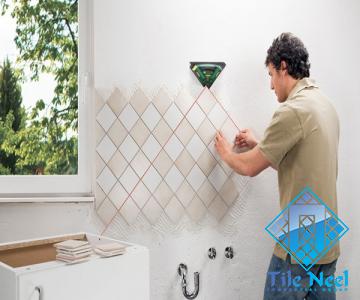 These tiles come in a myriad of hues and finishes, from vibrant jewel tones to sleek metallic shades, allowing you to create a custom backsplash or accent wall that serves as a focal point in your kitchen. Glass tiles are easy to clean and maintain, making them a practical choice for busy home cooks who value both form and function in their kitchen design. For those seeking a more organic and earthy vibe, consider incorporating natural stone tiles like slate or granite into your kitchen walls. These tiles offer a rustic charm and timeless elegance, with each piece bearing distinctive variations in color and texture. Natural stone tiles can add warmth and character to your kitchen, creating a cozy and inviting atmosphere that celebrates the beauty of natural materials. In terms of color and pattern selection for kitchen wall tiles, there are endless possibilities to explore based on your design preferences and the overall aesthetic of your space. Light-colored tiles can visually expand a kitchen and impart a fresh, airy feel, while dark tiles can create a sense of drama and sophistication. Consider mixing and matching different tile sizes, shapes, and colors to create a dynamic and visually engaging backsplash or feature wall that reflects your personal style and culinary sensibilities. Lastly, the installation of kitchen wall tiles is a critical step that can significantly impact the overall look and longevity of your design. Hiring a professional tile installer ensures that your tiles are expertly placed and grouted, resulting in a seamless finish that withstands daily wear and tear. Properly installed wall tiles not only enhance the aesthetic appeal of your kitchen but also provide a protective barrier against moisture and splatters, preserving the integrity of your walls for years to come. In conclusion, selecting the right floor and wall tiles for your kitchen involves a thoughtful consideration of factors such as durability, safety, design aesthetics, and installation requirements. By choosing high-quality materials like porcelain or natural stone for your kitchen floors and ceramic or glass tiles for your walls, you can create a functional and stylish culinary space that reflects your personality and lifestyle. Whether you prefer a sleek, modern look or a rustic, farmhouse feel, there is a wide array of tile options available to transform your kitchen into a sanctuary of culinary creativity and comfort. Embrace the versatility and charm of kitchen tiles to elevate your cooking experience and inspire your culinary adventures for years to come.
These tiles come in a myriad of hues and finishes, from vibrant jewel tones to sleek metallic shades, allowing you to create a custom backsplash or accent wall that serves as a focal point in your kitchen. Glass tiles are easy to clean and maintain, making them a practical choice for busy home cooks who value both form and function in their kitchen design. For those seeking a more organic and earthy vibe, consider incorporating natural stone tiles like slate or granite into your kitchen walls. These tiles offer a rustic charm and timeless elegance, with each piece bearing distinctive variations in color and texture. Natural stone tiles can add warmth and character to your kitchen, creating a cozy and inviting atmosphere that celebrates the beauty of natural materials. In terms of color and pattern selection for kitchen wall tiles, there are endless possibilities to explore based on your design preferences and the overall aesthetic of your space. Light-colored tiles can visually expand a kitchen and impart a fresh, airy feel, while dark tiles can create a sense of drama and sophistication. Consider mixing and matching different tile sizes, shapes, and colors to create a dynamic and visually engaging backsplash or feature wall that reflects your personal style and culinary sensibilities. Lastly, the installation of kitchen wall tiles is a critical step that can significantly impact the overall look and longevity of your design. Hiring a professional tile installer ensures that your tiles are expertly placed and grouted, resulting in a seamless finish that withstands daily wear and tear. Properly installed wall tiles not only enhance the aesthetic appeal of your kitchen but also provide a protective barrier against moisture and splatters, preserving the integrity of your walls for years to come. In conclusion, selecting the right floor and wall tiles for your kitchen involves a thoughtful consideration of factors such as durability, safety, design aesthetics, and installation requirements. By choosing high-quality materials like porcelain or natural stone for your kitchen floors and ceramic or glass tiles for your walls, you can create a functional and stylish culinary space that reflects your personality and lifestyle. Whether you prefer a sleek, modern look or a rustic, farmhouse feel, there is a wide array of tile options available to transform your kitchen into a sanctuary of culinary creativity and comfort. Embrace the versatility and charm of kitchen tiles to elevate your cooking experience and inspire your culinary adventures for years to come.
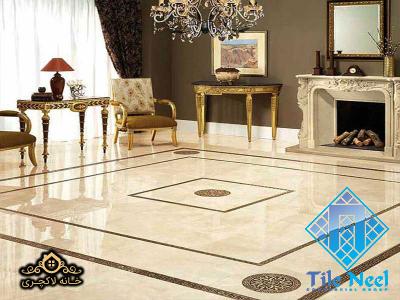

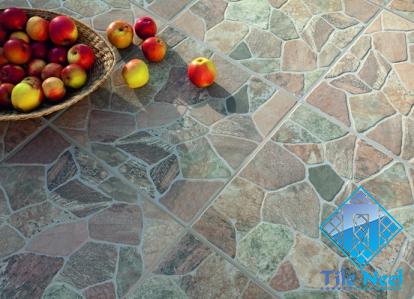
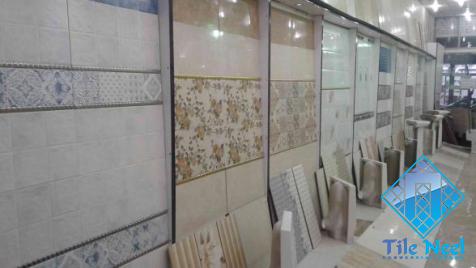
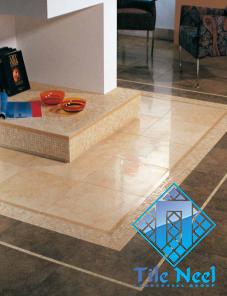

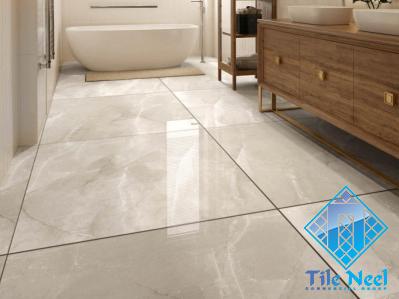

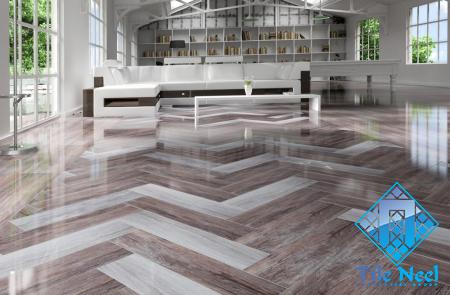
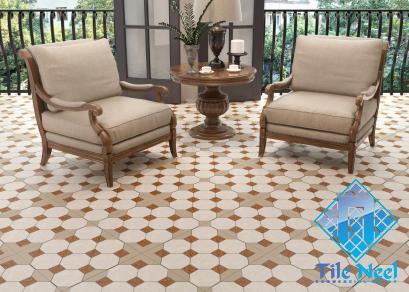
Your comment submitted.